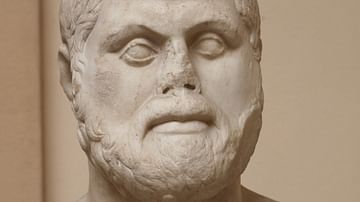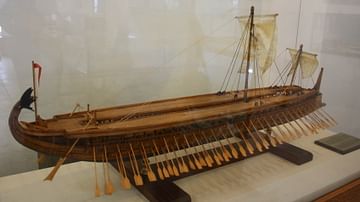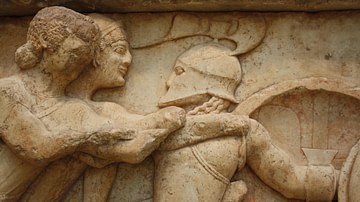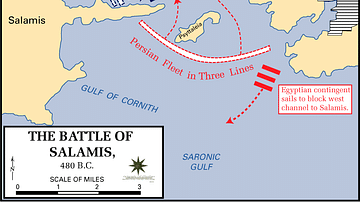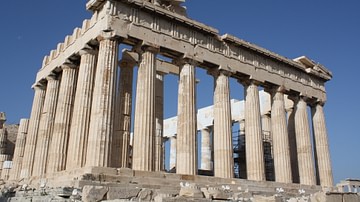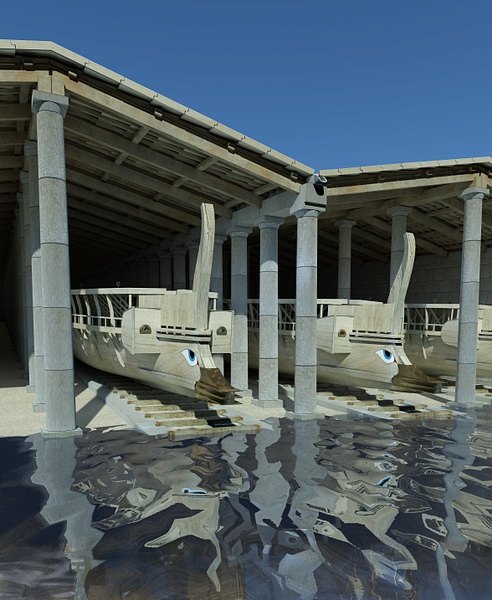
Piraeus (or Peiraieus) was the ancient port of Athens throughout the Archaic, Classical and Hellenistic periods and in fact consisted of three separate harbours - Kantharos, Zea, and Munichia. The first was the largest and used for commercial activity, whilst part of Kantharos and the other two smaller harbours were reserved for military use to house the massive Athenian fleet which allowed the city to be one of the most powerful players in Greece and the wider Mediterranean throughout antiquity.
Located just 7 km (5 miles) south west of Athens, Piraeus is in fact a limestone peninsula offering natural harbours which the Athenians exploited to create what, at its height in the 5th century BCE, would be the most important port and biggest naval base in the Greek world. The port became a thriving settlement in its own right and was a vast complex of ship sheds, shipping offices, warehouses, banks, shipyards, and many other secondary businesses such as shops and brothels.
Piraeus Ship Sheds
Ship sheds (neosoikoi) were a necessity for any sizeable fleet of ancient ships, especially trireme warships. These wooden vessels could not remain in the water indefinitely so to prevent them becoming water-logged, damaged by weather extremes, encrusted with barnacles and eaten by shipworm they had to be pulled ashore and if possible protected from the elements. Ship sheds were usually long narrow buildings (40 metres long by 6 m wide) with a roof and open at the sea end. To provide good ventilation their walls, rather than being solid, were often made only of pillars. There were hundreds of ship sheds at Piraeus at its peak and they were built on the limestone bedrock with a 1:10 incline to allow the ships to be pulled up (probably manually) stern first. Light maintenance work was also done in the sheds such as coating the hull with anti-fouling paint, traces of which remain at the site.
The Long Walls
Piraeus was fortified from c. 493 BCE which according to Thucydides was a project instigated by Themistocles and not finished until 480 BCE. The Long Wall fortifications which connected Piraeus to Athens were begun in c. 465 BCE and completed in 446 BCE. The Northern Long Wall measured around 6 km in length and ran from the south west of Athens to the north east of Piraeus. The second wall ran to Phaleron and, therefore, blocked the land access to the port. In 446 BCE a Middle Wall was added which ran parallel to the North Wall creating a narrow protected corridor between the city and port and which provided invaluable farm land and living space in times of war when the wider region of Attica was under attack, as it was, for example, during the Peloponnesian War (431-404 BCE).
Piraeus Fortifications
The builders of the harbours of Piraeus always had defence in mind as Zea was deliberately set back so that the harbour entrance was exposed to attack from the flanking shores. There was also probably a fortification wall to block off any attack by land. In 429 BCE, during the Peloponnesian War, a raid by long-time rival Sparta led the Athenians to better fortify Piraeus. The entrances to the harbours were made smaller by the construction of fortified moles running into the sea on either side of the port. Further, towers and platforms for archers were also added to the moles and moveable chains were used to close off the entrances completely when needed. This did not, though, deter Sparta attacking Piraeus again in 404 BCE when the Peloponnesians destroyed parts of the Long Walls.
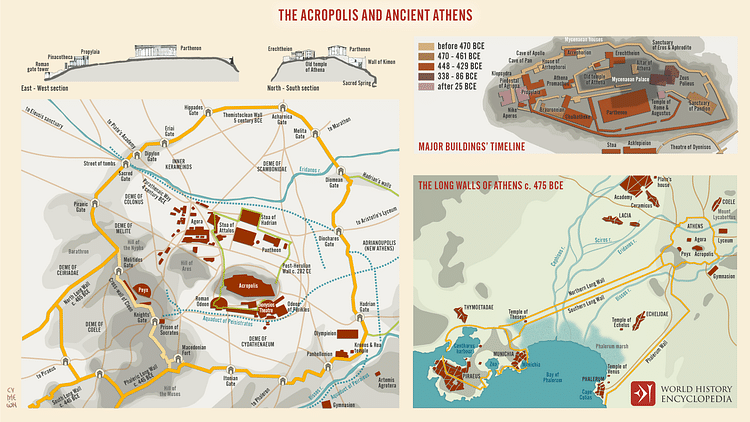
Following Athens' defeat in the Peloponnesian War in 404 BCE, Piraeus never quite regained her former glory. However, in 375 BCE the port could still accommodate 100 triremes and in the mid-4th century BCE the port once more expanded so that Zea could house 196 ships, Munichia 84 and Kantharos 94. During the Macedonian occupation from 322 to 229 BCE Piraeus and Athens became less important as a Mediterranean trade centre and the end finally came in 86 CE when the Roman general Sulla sacked Athens and destroyed the port.
Archaeology
All three harbours are still used today and archaeological remains include the foundations of several ship sheds, fortifications and a Hellenistic theatre. As the sea level has risen two metres since antiquity many of the ancient installations of Piraeus are now underwater but they continue to be excavated and in the early 21st century CE archaeologists have made significant discoveries, for example, that some ship sheds may even have been large enough to have housed two triremes end on end. Notable finds at the site over the years have included several bronze statues, perhaps the most famous being the Apollo now in the National Archaeological Museum of Athens.
